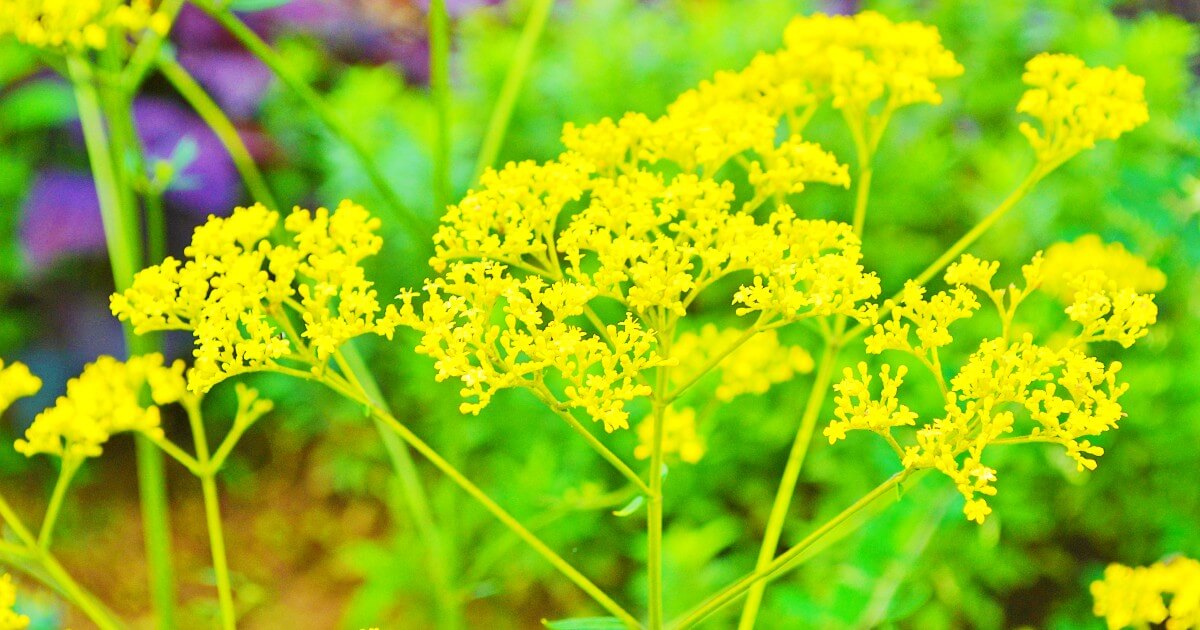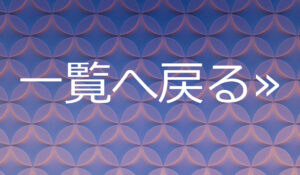There is also a theory that the small yellow flowers resemble millet grains, hence the name ‘millet rice’, which then changed to ‘women’s rice’ (ominaeshi/golden lace).
Another name for ominaeshi(golden lace/女郎花) is “love grass(Omoi-gusa/思い草)”, “millet flower(Awa-bana/粟花)” etc…
The name ‘Ominaeshi’ seems to derive from the song ‘Onnaeshi’, which is a love song based on the introduction to the Kokin Wakashu (Anthology of Ancient and Modern Japanese Poetry).
Here is an introduction to such the golden lace pattern(ominaeshi Mon/女郎花文)!
What is golden lace(Ominaeshi/女郎花)?
 Ominaeshi(golden lace/女郎花) is a perennial herb in the family Ominaceae and genus Ominaeshi, distributed throughout Japan (except Okinawa), China and eastern Siberia.
Ominaeshi(golden lace/女郎花) is a perennial herb in the family Ominaceae and genus Ominaeshi, distributed throughout Japan (except Okinawa), China and eastern Siberia.
It is said to have been introduced from China in the Nara period (710-794).
The flowering season of the ominaeshi(golden lace/女郎花) is from June to October, with the best time to see it being from August to September.
The flowers are characterised by small, pale yellow flowers (15-20 cm long) in an umbrella shape. It is said to be one of the seven autumn flowers, but actually blooms in early autumn.
Since the Manyoshu (万葉集/Anthology of Japanese Poetry), the ominaeshi(golden lace/女郎花) has been mentioned in many poems, and in the Heian period (794-1185) Kasane-iro-me, the colour scheme of the ominaeshi(golden lace/女郎花) was defined as transverse blue and latitudinal yellow on the front and blue on the back.
The fourteenth poem in the the Manyoshu (万葉集/Anthology of Japanese Poetry) [ I am in love with you,like never before.(To In order to derive the word “never before”, the first half of the song describes the scenery of Irises.)] By Nakaotomi no Irazume(中臣女郎).
Then, the language of flowers in the ominaeshi(golden lace/女郎花) is ‘kindness’, ‘beauty’, ‘fleeting love’, ‘eternity’ and ‘perseverance’.
The words ‘beauty’ and ‘fleeting love’ in the language of flowers are said to derive from the delicate, feminine appearance of the flowers as they rustle in the autumn breeze.
In addition, the dried and decoction of the female flower is a crude drug, which seems to have antipyretic and detoxifying properties.
About golden lace(Ominaeshi/女郎花)
The ominaeshi(golden lace/女郎花) pattern is one of the autumn grass patterns and is dyed on summer kimonos and other garments.
However, the ominaeshi(golden lace/女郎花) was not often used on its own.
It also does not seem to have been used in the design of family crests.
Design using golden lace(Ominaeshi/女郎花)
この投稿をInstagramで見る
この投稿をInstagramで見る





コメント